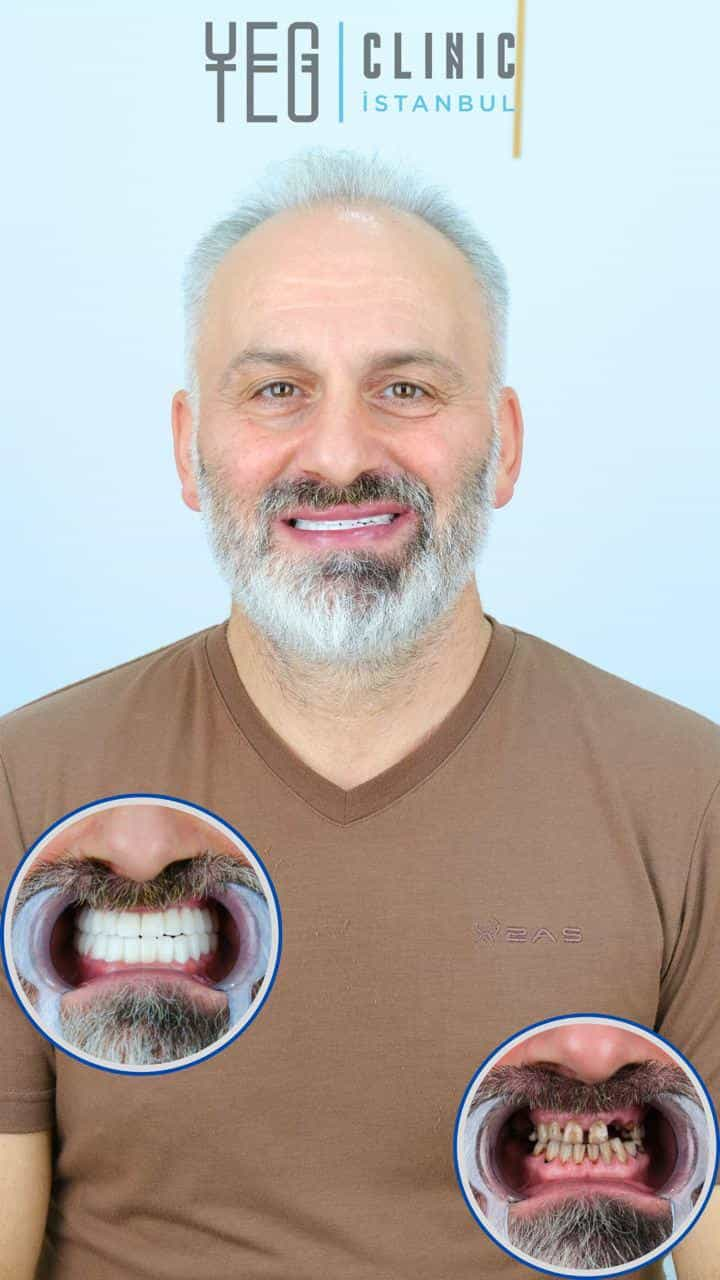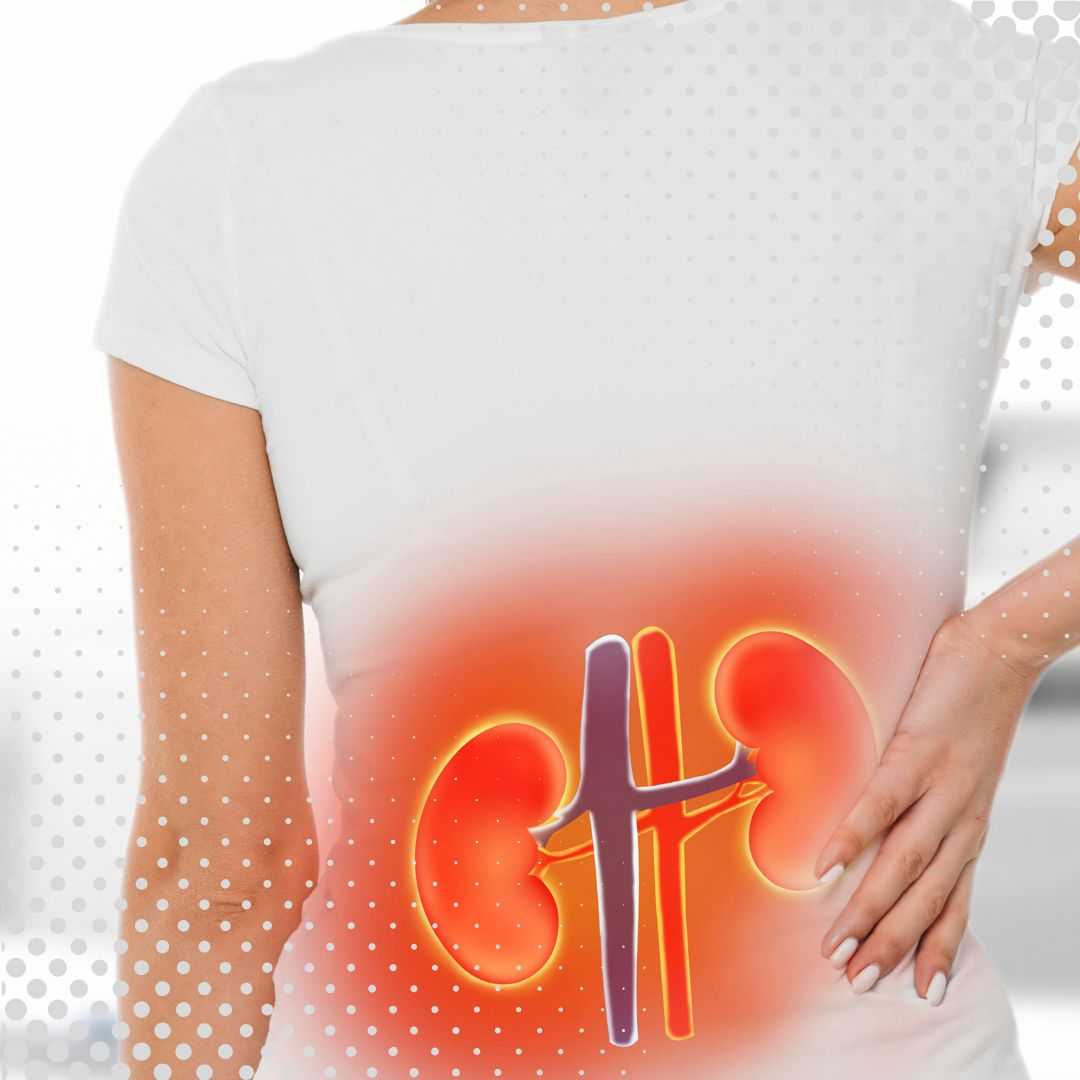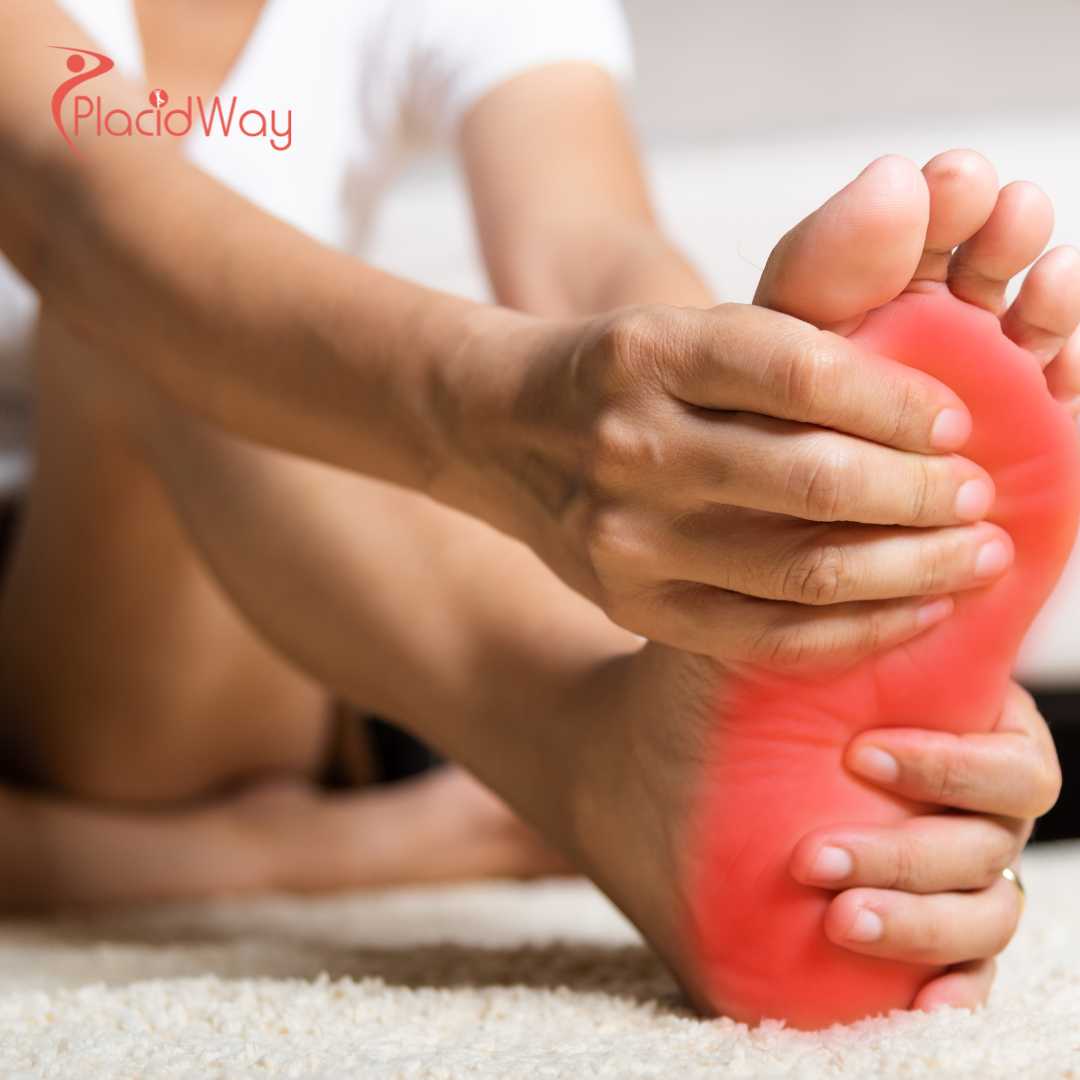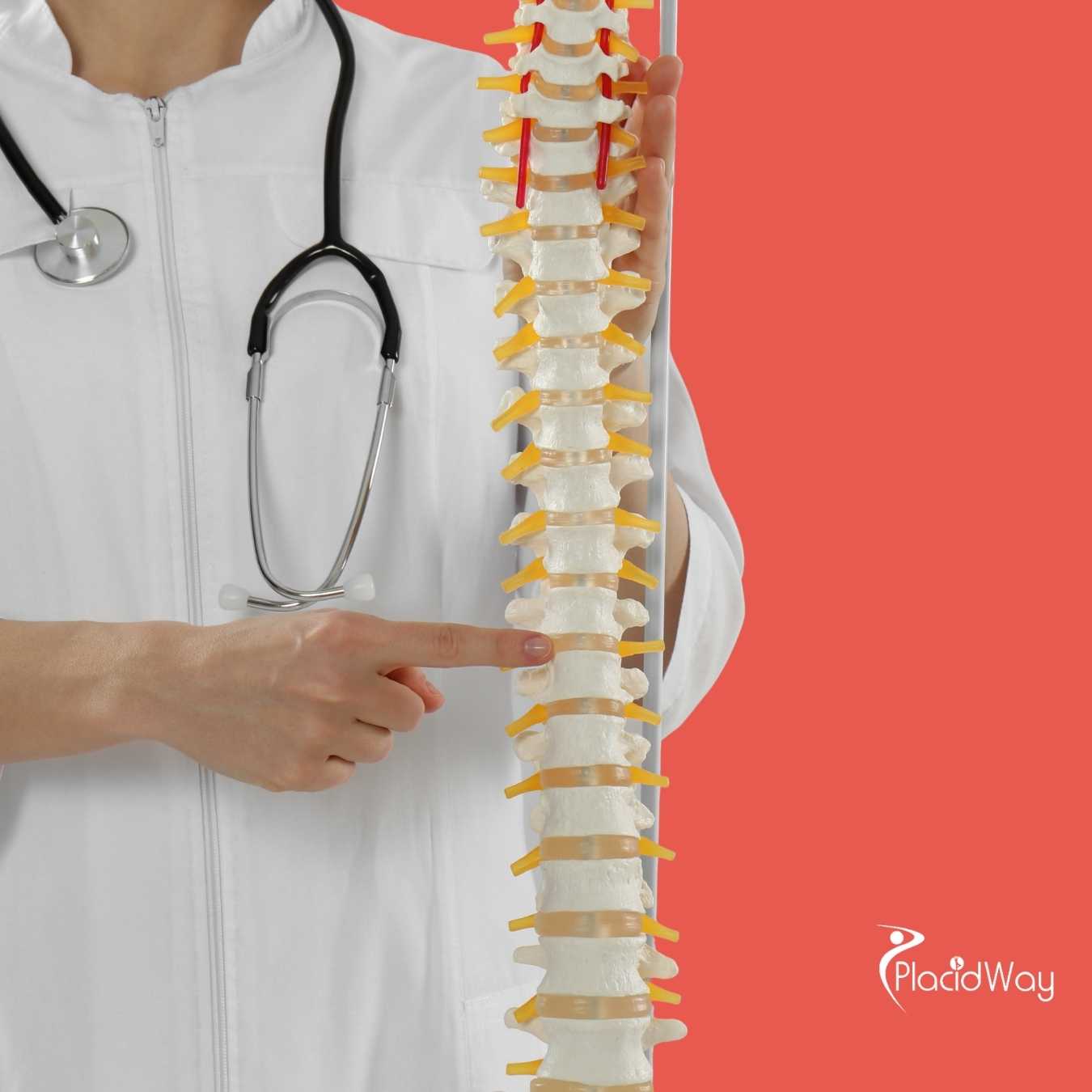.png)
That stiff, aching, burning back pain that greets you in the morning. The pain that shoots down your leg after standing too long. The fear of bending over the wrong way. If you're living with spine arthritis, this is your daily reality. For decades, the path for this condition was painfully clear: start with pain pills, move to physical therapy, graduate to steroid injections, and, when all else fails, face a major surgery like a spinal fusion. These options often feel like a trade-off, managing symptoms while worrying about side effects or irreversible operations.
But what if there was another way? What if, instead of just masking the pain or fusing your bones, you could help your body heal the damaged area? This is the promise of regenerative medicine, and specifically, stem cell therapy for spine arthritis. This advanced medical field is shifting the focus from "managing" to "repairing." It leverages your body's own internal repair kit—your stem cells—to target the source of the inflammation and degeneration.
This guide is here to answer all your questions. Is it safe? Does it really work? What's the procedure like? And of course, what does it cost? If you're tired of living with chronic back pain and are looking for a modern, minimally invasive solution, you're in the right place. Let's explore the future of spine health.
What is spine arthritis, exactly?
Think of your spine as a complex, flexible tower. It has two main types of joints that allow you to bend and twist:
- The Discs (front): These are the big, spongy cushions between your vertebrae. When they wear out, it's called degenerative disc disease (DDD). They can thin, dry out, or bulge, causing pain.
- The Facet Joints (back): These are the small, knuckle-like joints that connect your vertebrae in the back. [Image of facet joints in the spine] Like any other joint (such as your knee or hip), they are covered in cartilage that can wear away, leading to osteoarthritis. This causes bone-on-bone grinding, inflammation, and pain.
Stem cell therapy for spine arthritis aims to treat both of these issues by targeting the inflammation and tissue damage in the facet joints and the discs.
What is stem cell therapy for spine arthritis?
This isn't a drug or a synthetic substance. It's a form of regenerative medicine that uses your own (autologous) healing cells. The goal is to provide your body with a super-concentrated dose of repair cells right at the site of injury. This helps your body do the healing it's been trying to do, but couldn't accomplish on its own due to the chronic nature of the inflammation and damage.
How do stem cells work to treat back pain from arthritis?
It's a common myth that stem cells just "grow a new spine." Their function is much more sophisticated:
- Stop Inflammation: First, they act like a powerful, natural "fire extinguisher." They release proteins that are thousands of times more potent than a cortisone shot at calming the chronic, painful inflammation in your facet joints and around your nerves.
- Signal Healing (Paracrine Effect): This is their most important job. Stem cells are like a "general contractor" at a construction site. They release hundreds of different growth factors and signaling molecules that "tell" your local cells what to do. They can tell a torn disc to start repairing itself or tell new blood vessels to grow.
- Regenerate Tissue: Under the right conditions, these stem cells can also differentiate, or "turn into," the exact cells you need, like new chondrocytes (cartilage cells) to patch worn-out facet joints.
Am I a good candidate for stem cell therapy for my spine?
This treatment works best when there is still some healthy tissue left to "work with." You might be a good candidate if:
- You've been diagnosed with mild-to-moderate facet joint arthritis or degenerative disc disease.
- You have chronic back pain that limits your daily life.
- Physical therapy, pills, and lifestyle changes haven't given you enough relief.
- You want to avoid or postpone a major surgery like a spinal fusion.
It may not be the best option for severe conditions like advanced spinal stenosis, a large spondylolisthesis (slipped vertebra), or complete, bone-on-bone arthritis across the entire spine. A specialist can tell you for sure after reviewing your MRIs.
Is stem cell therapy effective for spine arthritis?
It's important to have realistic expectations. This is not a magic cure that gives you a 20-year-old spine. It is a biological treatment that takes time. Most patients who are good candidates experience a profound and lasting reduction in their pain levels and are able to return to activities they love. The effectiveness depends on the severity of your condition and your overall health.
What's the difference between stem cell therapy and a cortisone shot?
Think of it this way: A cortisone shot is like hitting the "mute" button on your body's fire alarm. The alarm (pain) stops, but the fire (the arthritis) is still burning. That's why the pain always comes back, and doctors limit how many you can get.
Stem cell therapy is like sending in the fire department to put out the fire and also a construction crew to repair the building. It addresses the root cause of the pain for a long-term, durable solution.
What is the procedure for a spine stem cell injection?
The entire process is done in a single day. Here's a breakdown:
- Harvest: The doctor numbs an area (usually the back of your hip or your abdomen) with local anesthetic to collect your cells. This is either a bone marrow draw or a "mini-liposuction" for adipose (fat) tissue.
- Processing: The sample is taken to an on-site lab and spun in a special centrifuge. This separates and concentrates millions of your stem cells into a small, powerful injectable.
- Injection: You lie on an X-ray table. The doctor numbs your back and then, while watching a live X-ray screen (fluoroscopy), guides a needle to the exact target. This precision is critical. They will inject the cells directly into the arthritic facet joints or the damaged disc.
After a brief 30-minute rest, a friend or family member can drive you home.
Where do the stem cells come from?
Both are excellent sources of Mesenchymal Stem Cells (MSCs), the type of cell that repairs musculoskeletal tissue. Bone marrow is the "classic" source and contains a great mix of healing cells. Adipose (fat) tissue is increasingly popular because it is very easy to access and is incredibly dense with stem cells—often 100 to 500 times more concentrated than bone marrow.
Is the stem cell procedure for back pain painful?
This post-injection soreness is actually a good sign! It's the "inflammatory phase" of healing. The stem cells are "waking up" your body's repair system, which temporarily increases inflammation. Your doctor will tell you not to take anti-inflammatory pills like Ibuprofen or Advil, as this can stop the treatment from working. This soreness fades quickly and is managed with rest and simple pain relievers like Tylenol.
What is the recovery like after a stem cell spine injection?
This is one of the biggest benefits. A spinal fusion has a recovery time of 6 to 12 months. A stem cell injection for the back has you back on your feet in days. You'll be advised to avoid heavy lifting and twisting for a few weeks, but you are encouraged to be up and walking to help the healing process.
How long does it take to see results?
You must be patient. You won't walk out of the clinic feeling "cured." The first week, you'll be sore. In the first month, you might feel a little better. The real, deep healing happens in months two and three. This slow, steady improvement is a sign of true, structural repair, not a temporary chemical mask.
How much does stem cell therapy for spine arthritis cost?
This is a critical factor for patients, as it is an out-of-pocket expense. The high cost reflects the advanced technology (centrifuges, imaging), the expertise required for the harvest, and the time-intensive nature of a precision-guided (fluoroscopic) injection, which is far more complex than a simple shot.
Because of this high cost, many patients explore medical tourism. Accredited international clinics often provide the same protocols for a fraction of the cost. Here is a general comparison:
| Treatment | Approximate Cost (USA) | Approximate Cost (Medical Tourism) | Goal & Notes |
|---|---|---|---|
| Stem Cell Therapy (Spine) | $6,000 - $12,000 | $4,000 - $9,000 | Goal: Heal Tissue. Not covered by insurance. |
| PRP Injection (Spine) | $1,000 - $2,500 | $500 - $1,500 | Goal: Signal Healing. Not covered by insurance. |
| Cortisone Steroid Shot | $600 - $1,500 | $300 - $800 | Goal: Mask Pain. Usually covered by insurance. |
| Spinal Fusion Surgery | $60,000 - $150,000+ | $15,000 - $30,000 | Goal: Stabilize. Covered by insurance (after deductible). |
Is stem cell therapy better than spinal fusion surgery?
A spinal fusion is a "last resort" treatment. It involves removing the damaged disc and facet joints and fusing the vertebrae together with screws and rods. It can be very effective for severe instability, but it's a massive, irreversible operation that leads to stiffness and often puts more stress on the joints above and below the fusion.
Stem cell therapy "burns no bridges." It's a minimally invasive procedure that aims to heal your natural anatomy. If it doesn't provide enough relief, surgery is still an option. But for many, it is the solution that allows them to avoid that surgery altogether.
What's the difference between PRP and stem cell therapy for the back?
Here's the analogy: If your arthritic spine is a run-down building, PRP is like sending in the foreman (platelets) with a set of blueprints (growth factors). He can "signal" and organize the repair.
Stem Cell Therapy is like sending in the foreman and a fleet of trucks full of raw materials and skilled workers (the stem cells). They can do the signaling and become the new bricks and mortar. For this reason, PRP is great for mild strains, while stem cell therapy is reserved for more significant arthritis and disc degeneration.
What are the risks of stem cell injections for the spine?
This is one of the safest medical procedures you can have. There is no risk of rejection, allergic reaction, or disease transmission. The risks are the same as any needle procedure:
- A small risk of infection (minimized by sterile technique).
- Temporary bruising or soreness at the harvest or injection site.
- A rare risk of nerve irritation or spinal headache.
The key to safety is X-ray guidance. A trained specialist must use fluoroscopy to ensure the needle is placed safely and accurately, away from nerves and the spinal cord.
How long do the results last?
If the therapy successfully repairs the cartilage in your facet joints and heals your disc, that is a durable, structural change. It does not, however, stop the aging process. You will still need to maintain your spinal health with good posture, core strength, and a healthy weight. But for many, this procedure "turns back the clock" on their pain, giving them years of improved quality of life.
Will stem cell therapy work for degenerative disc disease?
Injecting directly into a degenerated disc (an intradiscal injection) is a highly specialized procedure. The goal is to heal the tears in the outer wall (annulus) and to encourage the inner, gel-like nucleus to rehydrate and become a better "cushion." This can stop the disc from bulging and irritating nearby nerves, providing significant relief from both back pain and sciatica.
Is stem cell therapy for the spine FDA-approved?
This is the simple reason why it is not covered by insurance. It's not that it's unsafe (when done correctly); it's that it hasn't gone through the 10-year, billion-dollar clinical trial process to be approved as a mass-market "drug."
This regulatory "gray area" in the U.S. is why many international clinics have become leaders in the field. Countries like Panama, Mexico, and others have different regulatory frameworks that actively support regenerative medicine, allowing their clinics to gather extensive data and experience with these protocols.
How should I prepare for my procedure?
This is a critical rule. The treatment needs to create a temporary inflammatory response to work. NSAIDs are anti-inflammatory and will cancel out the treatment. Your doctor will give you a full list of medications to avoid. You can usually continue to take Tylenol (acetaminophen) if needed, as it is not an anti-inflammatory.
What happens after the treatment?
You can't just get the shot and go back to your old ways. The injection heals the "hardware," but the physical therapy rewires the "software." A good PT program is essential for long-term success. It will teach you how to move, lift, and use your core muscles to protect your newly-repaired spine for years to come.
Tired of Living with Chronic Back Pain?
You don't have to accept spine arthritis as a life sentence. Explore your options in regenerative medicine and discover high-quality, affordable stem cell therapy from leading international doctors and clinics.
Find your solution with PlacidWay today!
Stem Cell Therapy Abroad










Share this listing